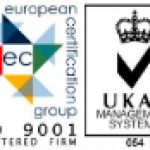The Different Types of Welding Used in Metal Fabrication
Metal fabrication is a big part of our process here at C&C Fabrications. We manufacture fabrication solutions for you and your business using a range of different fabrication techniques including laser cutting and powder coating. Mezzanine floors, safety barriers and suspended walkways are just some of the solutions we can provide, giving you a cost-effective and efficient solution.
Our team of metal fabrication experts use a range of different techniques to achieve the desired solution and finish of your metal products. In this blog we will go into depth of the different types of welding used in the metal fabrication process, and why each one is used for different processes.
What are the different types of welding used?
There are numerous types of welding used in the fabrication industry. The main three we use here at C&C Fabrications are; MIG welding, TIG welding and Spot welding.
MIG Welding
What is MIG Welding?
Metal Inert Gas (MIG) welding is a fabrication method that uses electricity to melt down and then weld pieces of metal together. This type of welding is particularly beneficial as it is a quick and efficient technique.
The science behind this method is that it uses an electrical arc that is formed between an electrode wire and the original piece of metal that is being welded. This electrical arc melts the electrode wire that creates the weld and fuses the pieces of metal together. Once the item has cooled, the weld solidifies and becomes strong and durable.
Advantages of MIG Welding
- Versatility – Unlike other different types of welding, MIG welding can be used to weld numerous different types of metal, including; aluminium, copper, alloys, carbon steel and stainless steel.
- Speed – MIG welding is fast, and therefore is often favoured by fabrication companies as it is a useful, time-saving technique.
- No cleaning required – The MIG welding process creates minimal mess, therefore there is little to no clean up required.
Disadvantages of MIG Welding
- Initial investment – The equipment used to perform MIG welding is expensive, therefore the initial investment in machinery can be a major setback for fabrication companies.
- Maintenance – As well as the machinery being expensive, it also requires a high amount of maintenance and service – often providing further costs.
- Metal thickness – MIG welding can only be used on thin to medium thickness pieces of metal, usually 0.6mm to 14mm.
TIG Welding
What is TIG Welding?
TIG welding, also known as Tungsten Inert Gas welding, is a popular welding process that uses electricity to join pieces of metal together.
The process involves an arc being formed between a tungsten electrode and the selected piece of metal in an inert atmosphere of argon or helium. The arc allows welding to be high-quality and extremely accurate, making it a popular welding process amongst fabrication companies.
Advantages of TIG Welding
- Versatility – TIG Welding allows for small and thin pieces of metal to be welded, making it useful for fabrication companies by giving them a process to use for metals of various sizes.
- High Quality – With TIG Welding, the operator has a large amount of control over the process (for example, heat input can be controlled with a foot pedal) which allows for high quality welds.
- Safety – As long as the metal being used has been cleaned thoroughly and doesn’t contain any oil or grease prior to use – no smoke or fumes are created during the welding process. TIG welding doesn’t produce sparks either, making this method even safer.
Disadvantages of TIG Welding
- Time consuming – The TIG welding process is considerably slower than the MIG welding, creating longer lead times and higher production costs. However, this does mean that accuracy in the process is greater.
- Complicated method – TIG welding requires highly trained fabricators for use – potentially increasing production costs and meaning fabrication companies have to hire specifically trained employees if they wish to incorporate the process in to their offering.
Spot Welding
What is Spot Welding?
Spot welding is a process that uses resistance welding and involves pieces of metal being welded together by pressure and heat being applied from an electric current. It works by contacting copper electrodes to the metal where both pressure and the electric current are present, causing heat to be generated and weld the pieces of metal together.
Low carbon steel is the most commonly used type of metal to spot weld as it provides the most durable finish.
Advantages of Spot Welding
- Time efficient – Spot welding is a quick process that doesn’t require any filler material to create the weld. This means it can be performed quickly and does not require a highly skilled fabricator to carry out.
- Low cost – As spot welding is a quick process and no filler is needed, it allows for low production costs meaning that fabrication companies can obtain bigger profit margins on spot welded pieces of metal.
Disadvantages of Spot Welding
- Restricted to thin metal – Due to the copper electrodes having to touch in order to create the weld, spot welding cannot be used on thick pieces of metal, therefore restricting the types of metal that can be used.
- Instalment costs – The initial cost to purchase the machinery needed for this process can be costly, meaning companies could struggle with the initial investment needed to be able to spot weld.
- Poor looking finish – Compared to other methods, spot welding doesn’t provide the best-looking finish, and it is usually visible where the pieces of metal have been joined.
If you want to learn more about metal fabrication and the different techniques used, head over to our metal fabrication page for more information – or don’t hesitate to get in touch with us by calling 01977 670 067 or visiting our contact page.



